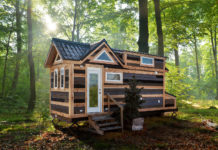If you use a car or bus to get around, chances are you’ll often have to cross a bridge. For most people, this is little cause for concern—certainly, few expect to experience dizziness or a panic attack, or even quite realistically fear for their lives. But for those of you who do feel a little nervous on your local bridges, this article will hopefully reassure you: by comparison to these 22 bridges, you have little to worry about!
1. Hussaini Suspension Bridge, Upper Hunza, Pakistan
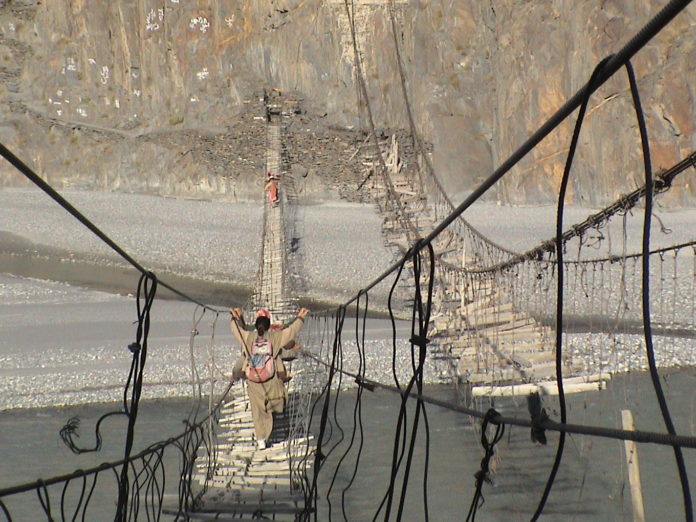
Not for nothing is this makeshift bridge in a remote part of Pakistan often called the most dangerous in the world. The wooden slats are spread far enough to fall through (into the rushing Hunza River below) and the flimsy wire structure is often rocked by gusts of wind.
More unnerving still, you will cross in view of the ruined former bridge, somehow still hanging alongside it. Should you find yourself needing to cross it, make sure you have some sort of life insurance beforehand. At least your death could profit someone…
2. Kuandinsky Bridge, Transbaikal, Russia
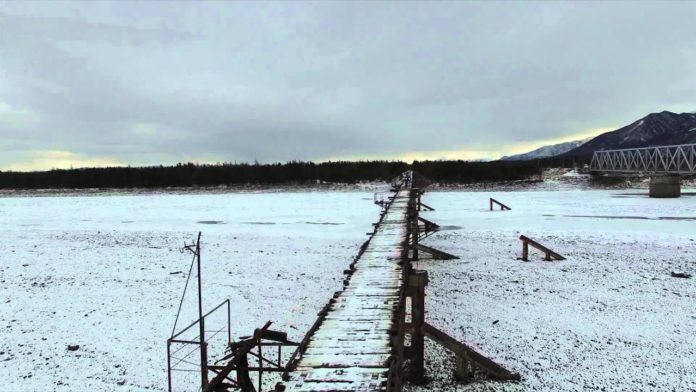
Single, six-foot-wide carriageway covered with slippery wooden planks? Check. No guard rails—in fact, no safety features at all? Check. Near-constant ice and windy conditions? Check again. The Kuandinsky Bridge doesn’t even pretend not to be terrifying.
Built 30 years ago to be part of a Soviet railway that was never completed, the bridge was later adapted for vehicle and pedestrian use by local residents who wanted to cross the Vitim River (hence the wooden planks). Although officially closed to the public, it is still popular with daredevil drivers.
3. Captain William Moore Bridge, Alaska, USA
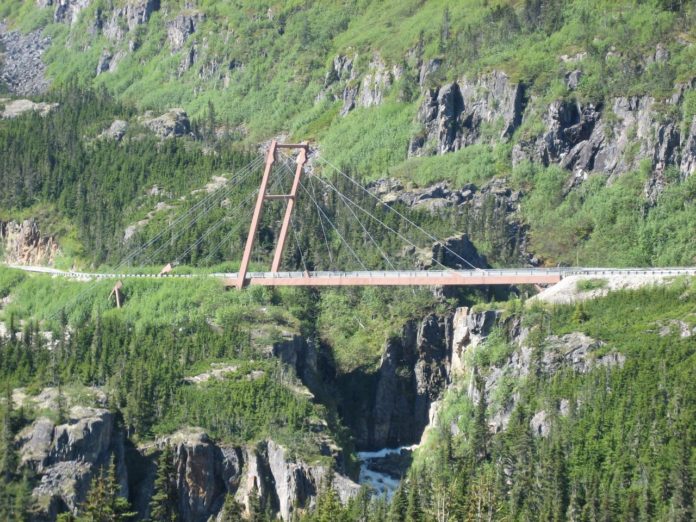
Built in 1976 along the Klondike Highway, the Captain William Moore bridge looks innocuous enough at only 110 feet long. But closer inspection reveals a startling characteristic: it is anchored to only one side of the gorge. This is because the gorge itself flows through a fault line, and engineers had to figure out a way to stop the bridge being ripped apart by an earthquake.
If that wasn’t enough to make drivers nervous, by 2018 the bridge had deteriorated to the point where heavy vehicles were only allowed to cross one at a time, directly along the center marking of the bridge and at only five miles per hour. Captain William Moore bridge will soon enter retirement as a pedestrian walkway, to be replaced with a solid concrete structure next door.
4. Sidu River Bridge, Badong County, China
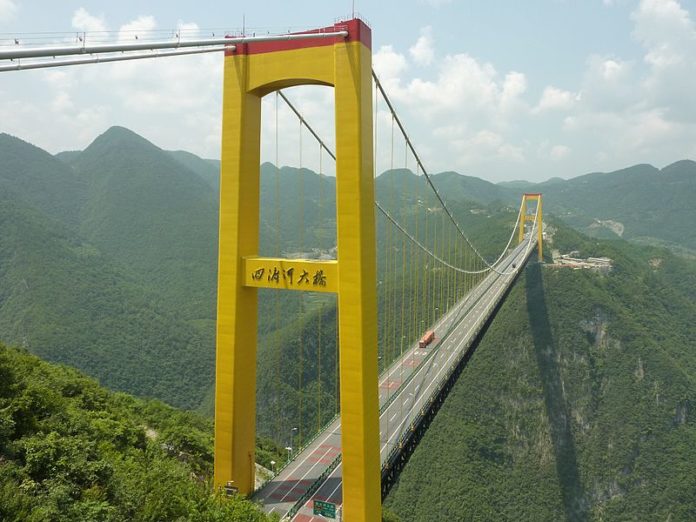
Although this is a sturdy, modern suspension bridge, it rises a breathtaking 1,627 feet above the valley below—in other words, a definite no-no for anyone who is afraid of heights.
Indeed, the Sidu River Bridge is so tall that the Empire State Building could fit underneath it, and rockets had to be used to secure the first sections of the suspension cables. It wasn’t exactly “reassuringly expensive” to build either, costing a mere US$100 million in 2009.
5. Eshima Ohashi Bridge, Matsue & Sakaiminato, Japan
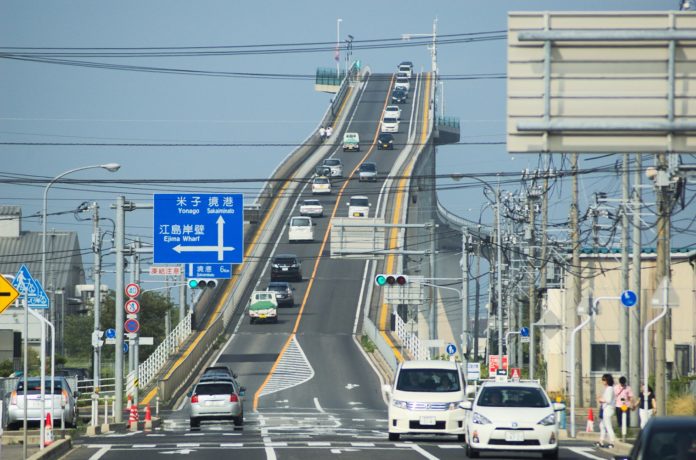
The mile-long Eshima Ohashi Bridge, which crosses the Nakaumi lake to connect the cities of Matsue and Sakaiminato, is a rollercoaster for cars.
In order to let ships pass underneath, the bridge rises at alarming gradients of 6.1% and 5.1% on each respective side.
6. Pont Quepos, Quepos, Costa Rica
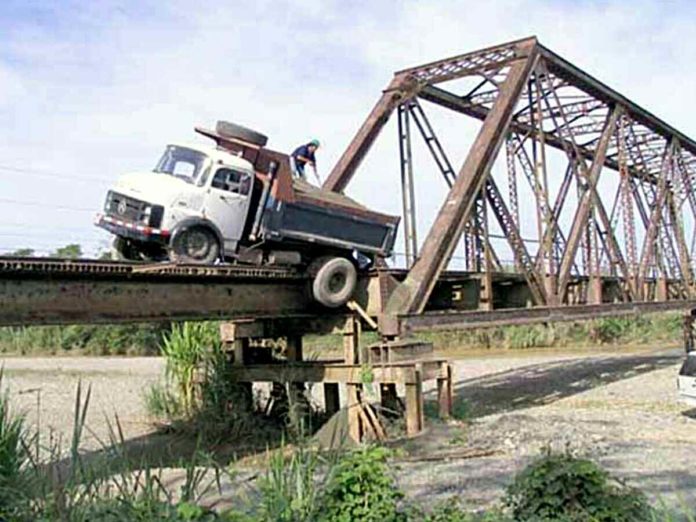
Locals have dubbed Pont Quepos the “Bridge of Death,” and you’d do well to heed their warning. Covered with loose slats that are too short, leaving yawning gaps on each side of the already narrow lane, it always looks on the verge of collapsing.
And yet somehow it is still open to traffic, including commercial trucks tempting fate.
7. Chesapeake Bay Bridge, Maryland, USA
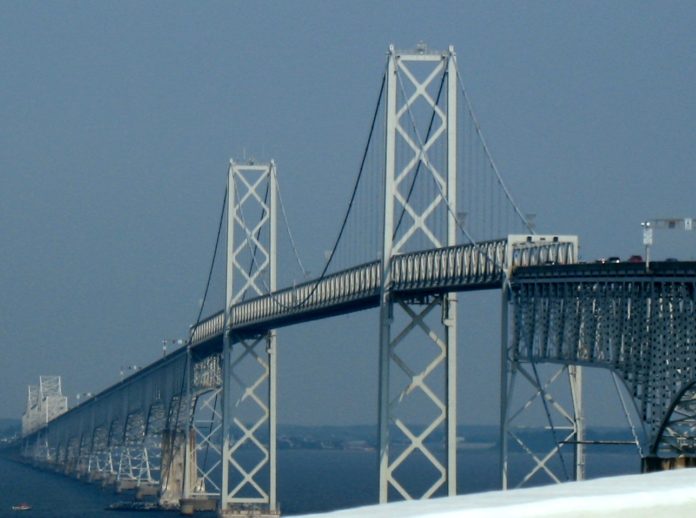
The Chesapeake Bay Bridge is notable for its long span of 4.3 miles, but it also rises to a giddy 200 feet above open water. In addition, it has no hard shoulders, has low guard rails, and is frequently subject to gusty winds.
As a result, drivers crossing it have been known to experience panic attacks, with symptoms including tunnel vision as they imagine losing control and crashing over the edge.
8. Monkey Bridges, Mekong Delta, Vietnam
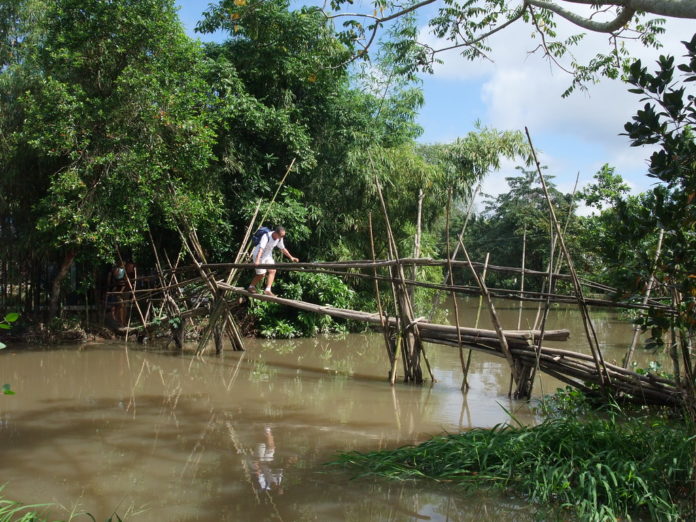
These traditional bridges built out of bamboo not only look fragile, but they also frequently have to be rebuilt after being destroyed by bad weather or simply collapsing.
A monkey bridge typically consists of just a single bamboo log or two to walk across and one handrail for support. The name comes from the stooped posture required for a safe crossing.
9. Zhangjiajie Glass Bridge, Zhangjiajie National Geological Park, China
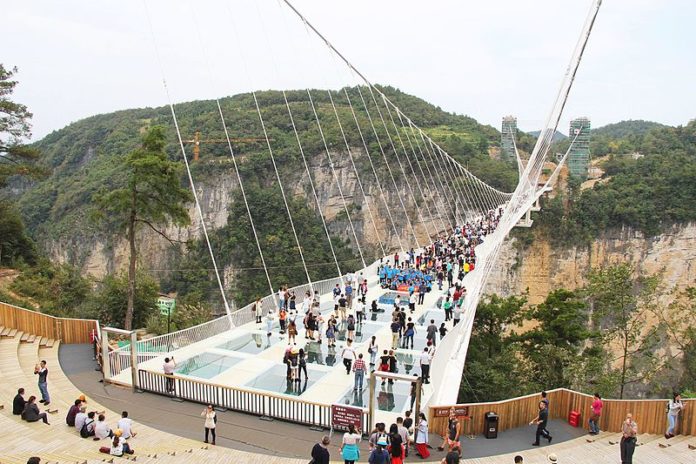
A 984-foot drop is scary enough. Now, imagine looking directly down through a glass walkway, into the canyon beneath your feet!
Designed for tourists, the Zhangjiajie Glass Bridge was temporary closed in 2016 after it attracted 80,000 visitors per day, ten times the number it was designed to accommodate.
10. Royal Gorge Bridge, Colorado, USA
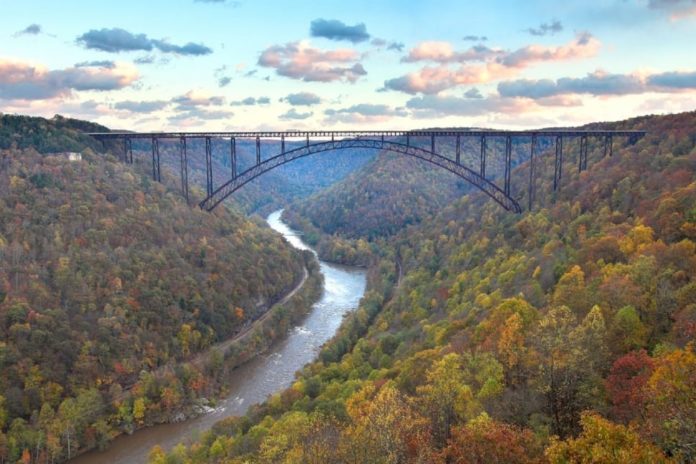
Traversing the Arkansas River at a maximum height of 955 feet, the Royal Gorge Bridge remains the highest bridge in the United States, despite having been built way back in 1929.
Although in good condition—the bridge is today a popular tourist attraction, mainly used by pedestrians—the absence of a vertical stiffening truss means that vehicles crossing its wooden planks experience more of a wobble than they bargained for.
11. Bridge of Immortals, Anhui province, China
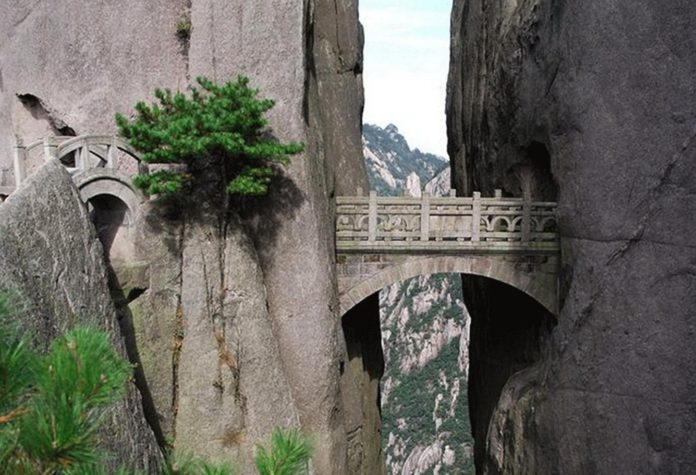
This bridge, located in the Huanghsan mountain range in eastern China, spans a chasm between two rocks at an altitude of 4,300 feet. It’s scary enough today, but before 1987 locals had to make the crossing on a far more dangerous structure, and many did not make it.
Hence, despite being officially called the Fairy Walking Bridge, it is still commonly known as the “Bridge of Immortals.”
12. Puente de Ojuela, Durango, Mexico
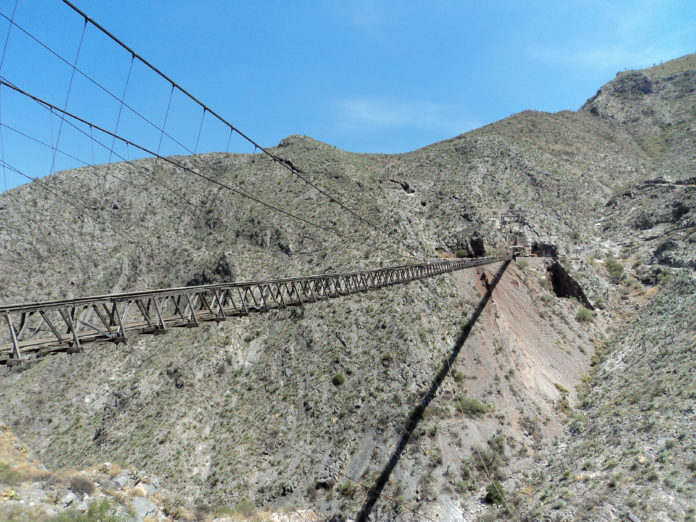
When this suspension bridge was originally constructed in 1898 to serve the local mine below, it was the third-longest of its kind in the world.
Nowadays a popular tourist attraction—a pedestrian-only bridge leading to a ghost town—it still looks worryingly thin for its length, and the road leading there has been named one of the most dangerous in the world.
13. Aiguille du Midi Bridge, Mont Blanc, France
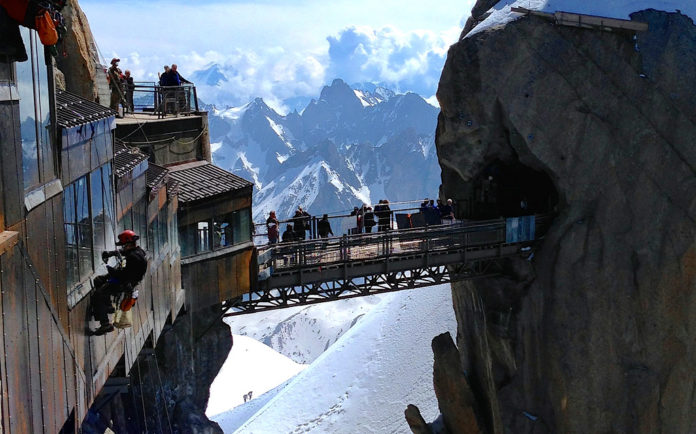
The views from this tiny footbridge, connecting two sections of the Aiguille du Midi mountain some 12,500 feet above sea level, are truly astonishing. But they are not for the faint of heart, especially now that a glass floor looking over a 1,000-foot precipice has been installed at one end!
That said, if you’ve made it there already, then you’ll probably be OK: the bridge is accessed by a cable car from Chamonix that takes just 20 minutes to climb 9,200 feet.
14. Carrick-a-Rede Rope Bridge, County Antrim, Northern Ireland
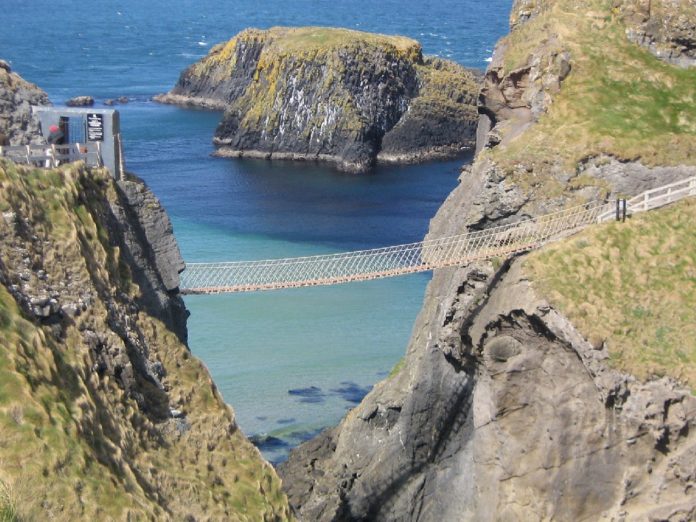
This three-foot-wide rope bridge sways 66 feet above the sharp rocks below, connecting the tiny island of Carrick-a-Rede with the mainland.
Some tourists have been known to make it across, only to refuse to return!
15. Deception Pass Bridge, Washington, USA
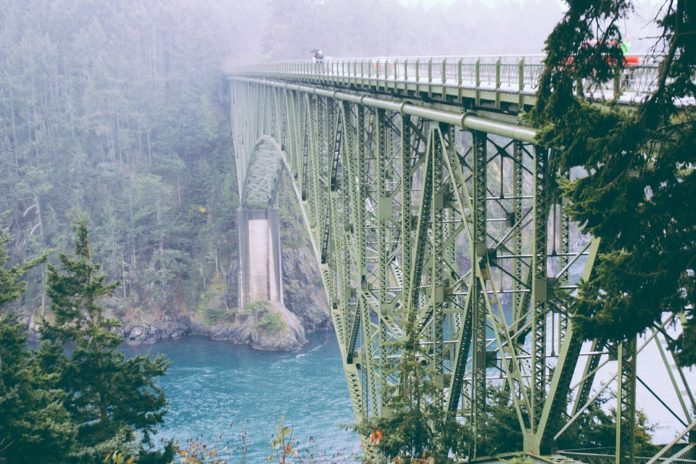
Deception Pass Bridge is, in fact, two consecutive, two-lane bridges connecting Whidbey Island and Fidalgo Island in Washington State.
It is high (180 feet), narrow, frequently shrouded in fog, and doesn’t offer much in the way of guardrails, making the voyage particularly nerve-wracking by foot. No doubt some visitors would prefer the days when a ferry was the only option!
16. Titlis Cliff Walk, Switzerland
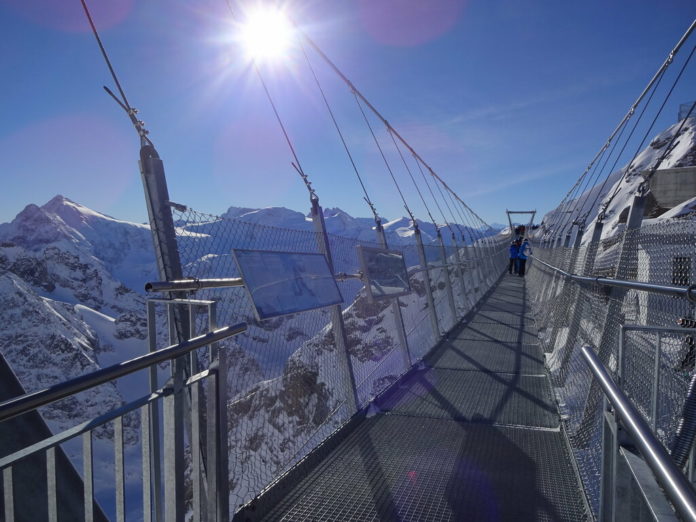
The 328-foot Titlis Cliff Walk opened for pedestrian use in late 2012. Billed as the “Europe’s highest suspension bridge,” this is only true with respect to its elevation, roughly 10,000 feet above sea level.
That said, if you were to fall off the narrow (but admittedly well-protected) walkway, it would be a long and almost certainly fatal slide down the side of Mount Titlis to the glacier 1,500 feet below.
17. Storseisundet Bridge, Eide & Averøy Norway
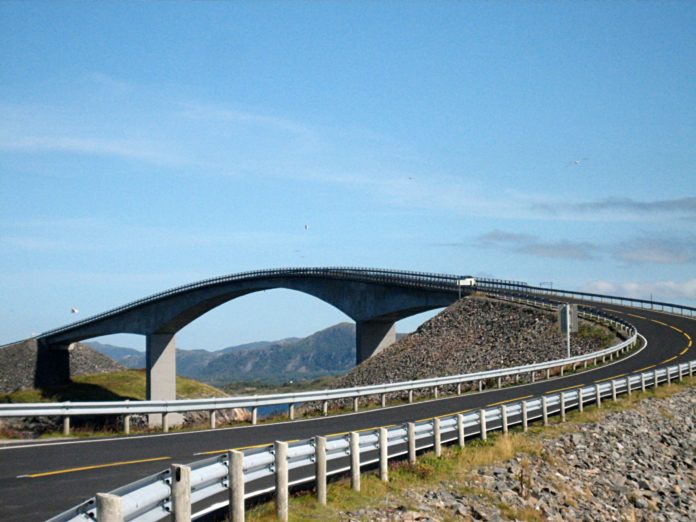
This bridge, in a remote part of Norway, is another rollercoaster ride, only with added twists and turns. Dubbed the “road to nowhere,” it gives approaching motorists the impression that they are about to drive off the end and straight into the sea.
The descent on the other side of the bridge is obscured from view. In the wild weather that is common to the region, its lower levels are sometimes lashed with waves. Yet another bridge that reminds us of the importance of getting car insurance for our rental car while travelling…
18. Langkawi Sky Bridge, Malaysia

Suspended from a single leaning pylon, this pedestrian bridge looks as though it is floating, making it feel especially precarious for anyone afraid of heights (the lush forest is around 300 feet below). Sections of glass floor further reinforce just how high up you are.
After undergoing substantial renovations, it is now fully open to the public. If you can summon the courage, the views of the surrounding Langkawi archipelago are worth it.
19. Kakum Canopy Walkway, Kakum National Park, Ghana
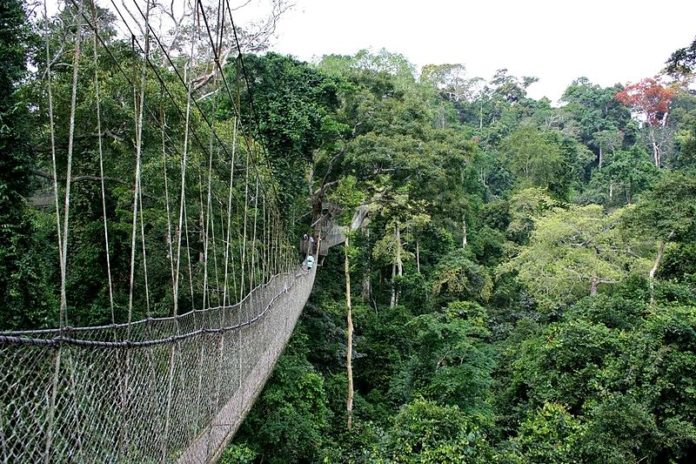
The Canopy Walkway is in fact made up of seven consecutive bridges strung through the upper reaches (up to 160 feet high) of dense rainforest.
Here you’ll encounter birds and monkeys, so you might be startled by more than just the swaying bridge. And, given how slim the 1,000 feet long walkway is, getting away quickly isn’t an option.
20. Golden Bridge, Annamese Mountains, Vietnam
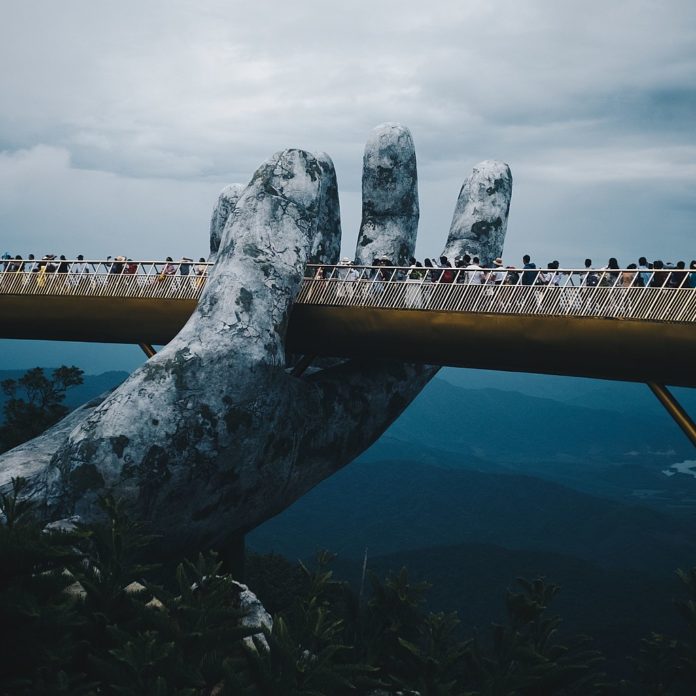
The Golden Bridge isn’t the scariest bridge on our list, but the views can still take your breath away. Situated about 3,200 feet above sea level in the Ba Na Hills resort, this almost 500-foot-long pedestrian walkway appears to be supported by two giant concrete hands, lifting it toward the sky.
It has become a highly popular tourist attraction since opening in 2018.
21. Montenegro Rainforest Bridge, Costa Rica
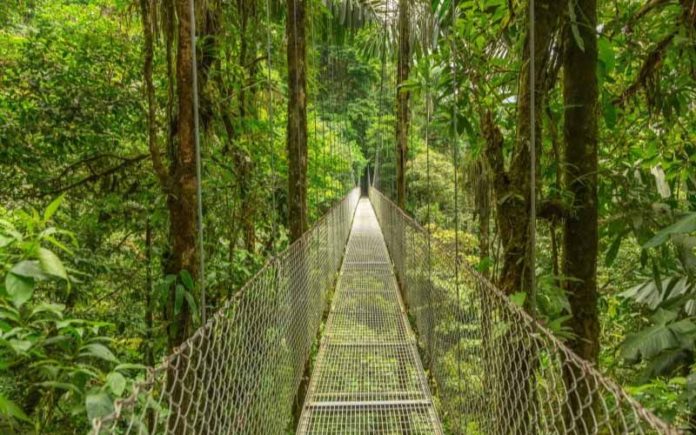
The Montenegro Rainforest Bridge offers an ideal way to experience one of the world’s most diverse tropical forests, high up in the canopy.
Just don’t get too distracted by all the surrounding beauty—in some parts many of the planks are missing, so one careless step could lead to a fatal fall. Two words: travel insurance.
22. Confederation Bridge, Prince Edward Island, Canada
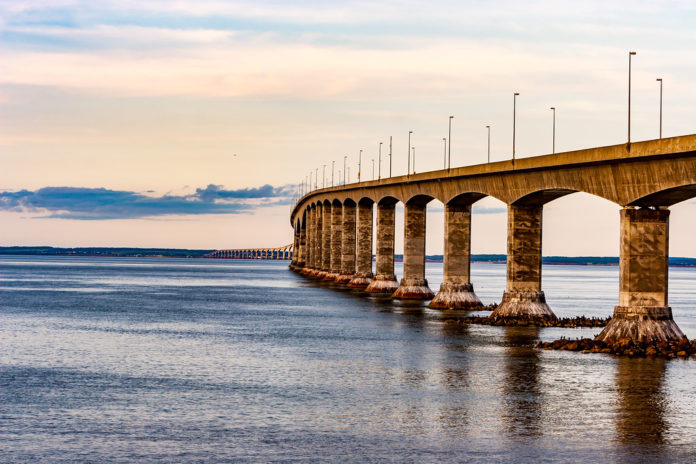
Over 20 years after its inauguration, the Confederation Bridge remains the world’s longest structure over ice-covered water. Drivers can be visibly reassured by the sturdiness of its construction: the gigantic supporting piers are reinforced by ice-shields to break up the thick pack ice that flows through the Northumberland Strait each winter.
Nevertheless, taking the eight-mile journey in strong winds, with no possibility of turning back, can be a scary proposition for even seasoned drivers.


